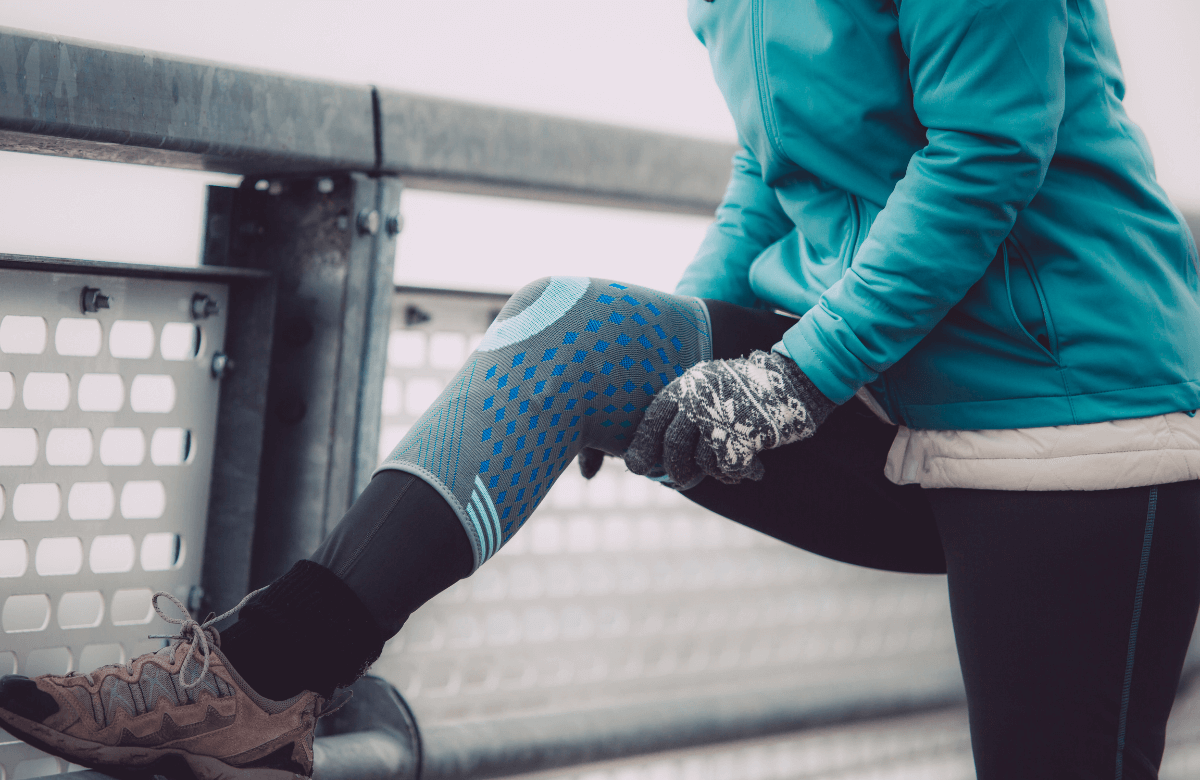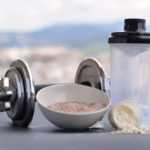Are you looking for quality knee sleeves to provide optimal support and alleviate pain in your knee joints? Whether you’re an athlete aiming to enhance your performance or an individual dealing with knee discomfort, finding the right knee sleeves can be a game-changer. With a multitude of options available, it can be overwhelming to determine which compression knee sleeves are truly effective.
Knee sleeves are designed to provide stability, and support to the knee joints. They offer compression, improve blood flow, reduce swelling, and stabilize the knee joint. This, in turn, can alleviate pain, enhance mobility, and aid in injury prevention. They also keep the knee warm, making them valuable for individuals with joint stiffness or those recovering from injuries.
Selecting the right sleeves for your knees is undoubtedly challenging as there are a lot of factors that go into that decision. But you’re in luck! We’ve done the research and evaluation for you, handpicking a curated selection of the best knee sleeves to alleviate knee pain.
Jump to:
In A Hurry? Here’s Our Best Picks

| 
| 
| 
| No products found. | |
| Product's name | Our Top Pick Knee Sleeves & Compression Brace (1 Pair) With Gym Bag - IPF... | The Best Budget Option POWERLIX Knee Compression Sleeve - Best Knee Brace for Men &... | The Best Knee Sleeve for Sports CAMBIVO 2 Pack Knee Braces for Knee Pain, Knee Compression... | Best Powerlifting Knee Sleeves Stoic Knee Sleeves for Men Women - 7mm Neoprene Knee Support... | The Best Option for Knee Pain No products found. |
| Final Thought | These models of knee sleeves from Gymreapers are best suited for strength athletes on a budget engaging in training activities like powerlifting, bodybuilding, and CrossFit. | The Powerlix Compression Sleeve is particularly beneficial for recreational athletes and active individuals who engage in physical activities such as running, sports, and workouts. | The CAMBIVO compression sleeve is most suitable for functional training athletes and sports enthusiasts who like to enjoy their activities pain-free and are in search of quality knee sleeves. | These models of knee sleeves are specifically designed to cater to the needs of strength athletes who power lift, providing the stability and confidence necessary to excel in their lifting sessions. | Modvel is the ideal brace for managing knee pain. It can be worn by people suffering from arthritis, meniscus tear, and post-surgery swelling. |
| Colors | Black/White, Black/Red, Green/Black | Various colors to choose from | Black, Gold Copper, Army Green | Black | Range of colors available |
| Material | Reinforced stitching and flexible Neoprene material | Neoprene | 65% nylon, 20% latex, 15% spandex | Neoprene | Spandex, Nylon, Latex Fiber |
| Sizes | S - XXL | S-XXL | S - XL | XXXS - XXXL | S - XXXL |
| Price | $$ | $ | $ | $$$ | $ |
| Learn more | See at Amazon | See at Amazon | See at Amazon | See at Amazon | No products found. |
Who Is This Guide For?
Hey, if you want to give your knees some extra support and protection, this guide is for you. This guide is meant for recreational athletes, dedicated fitness enthusiasts looking for stability during workouts, and those with knee pain and issues like previous injuries or arthritis.
It’s also helpful for folks recovering from knee surgery, or those who experience occasional discomfort during their daily activities. No matter your situation, this guide will help you find the right knee sleeves to keep you moving comfortably.
Why You Should Trust BoxLife?
At BoxLife, we value the significance of thorough research and rigorous testing. Our team of experts and training enthusiasts is committed to providing you with accurate and up-to-date information on the latest fitness gear, including knee sleeves. We carefully evaluate each product based on key factors such as material quality, compression level, fit, comfort, and overall effectiveness in providing support and protection for your knees.
Moreover, we understand that your needs are of utmost importance, and that’s why we prioritize delivering comprehensive and honest insights. By delving into the experiences of real users, we gain invaluable perspectives that inform our assessments. We take pride in providing unbiased reviews, ensuring that our recommendations are reliable and trustworthy.
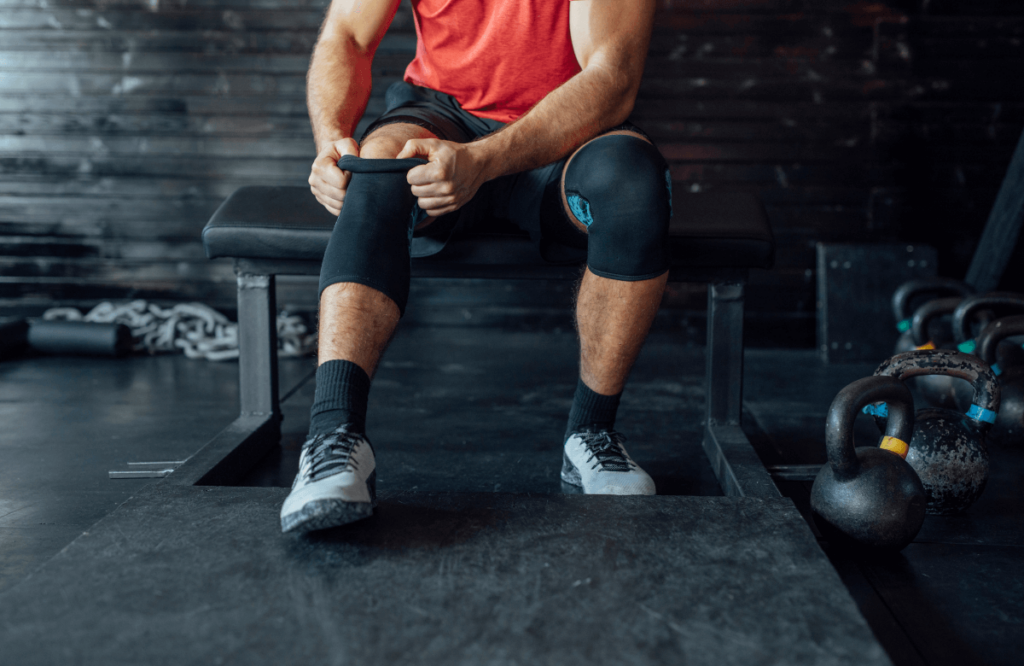
How We Picked the Best Products?
When selecting the best models of knee sleeves, we followed a careful process to ensure we offered you with nothing but the finest products. Here’s an overview of how we made our selections:
- Team Experiences: Our team members shared their individual experiences with different compression knee sleeves. This provided valuable insights into the quality, comfort, and effectiveness of various products.
- Reliable Reviews: We extensively researched and analyzed reliable reviews from reputable sources, including online stores like Amazon, Titan, and Rogue Fitness. These reviews allowed us to gather a diverse range of opinions from customers who have used the knee sleeves.
- Consumer Ratings: We considered consumer ratings and feedback to gauge the overall satisfaction levels and performance of each knee sleeve. By aggregating ratings from various sources, we obtained a comprehensive understanding of how users perceived the products.
- Variety of Sources: To ensure a comprehensive selection, we sought input from various sources. This involved reviewing discussion threads and comment sections on platforms like Reddit and Quora, where knee-sleeve users share their experiences and opinions.
How We Compared the Products
Comparing the products to determine the best compression knee sleeves was not an easy task. We conducted a thorough analysis by carefully considering each product’s relevant features and specifications, which helped us objectively assess its strengths and weaknesses. Here are the key aspects we compared and analyzed:
- Type of Material: We examined the type of material used in the models of knee sleeves and looked for options made from high-quality and durable materials such as neoprene – synthetic rubber or compression fabrics. We considered factors like breathability, moisture-wicking properties, and hypoallergenic features.
- Compression Level: We evaluated the compression level provided by each knee sleeve. Different sleeves offer varying degrees of compression, which can affect stability and support.
- Comfort: We searched for sleeves that prioritize comfort, provide a snug fit, allow freedom of movement, and considered features like ergonomic design, seamless construction, and flexibility.
- Support and Stability: We assessed the level of support and stability provided by the knee sleeves. We considered your specific needs, such as if you require extra support during intense workouts or recovery from an injury.
- Durability: We examined the durability of the products. Checked for reinforced stitching, quality craftsmanship, and customer reviews regarding the product’s longevity.
- Reviews and Ratings: We read customer reviews and ratings for each knee sleeve. Paid attention to feedback related to comfort, fit, durability, and overall satisfaction. Considered both positive and negative reviews which helped us get a balanced understanding of the product’s strengths and weaknesses.
- Price: We compared the prices of different products while considering their features and quality. We looked for products that offer a balance between affordability, quality, and overall performance.
The Best Knee Sleeves on the Market
After compiling the relevant information, we narrowed our selection and identified the most suitable contenders for the best models of knee sleeves available. Each option underwent a thorough assessment based on the above-mentioned categories. Additionally, we assigned a unique label to each knee sleeve to ensure a comprehensive evaluation and aid in the decision-making process.
Gymreapers 7mm Knee Sleeves – Our Top Pick
Gymreapers 7mm is a type of knee sleeve highly recommended due to its exceptional quality. Crafted from premium neoprene, these sleeves provide optimal joint warmth, joint protection, and support during intense leg workouts making them the ideal choice for squats. They are made of reinforced stitching style, ensuring durability, and their wide size ranges allow for easy slip-on.
Specifically designed with strength athletes in mind, the Gymreapers 7mm Knee Sleeves are a reliable companion for lifting sessions and performing heavy movements. Whether you prefer traditional bodybuilding exercises or CrossFit workouts, these versatile sleeves accommodate various training styles.
Ideal for powerlifting, the 7mm thickness of the Gymreapers knee sleeves offers ample support for heavy squats. Their classic 3-panel design ensures longevity, and they are even approved by the IPF, which is highly advantageous for competitive powerlifters.
Moreover, these sleeves have a contoured shape with a maximum length of 11″, providing additional coverage during intense lifting sessions and heavy movements. While they stay securely in place, it’s important to note that the 7mm sleeves generate more joint warmth, potentially leading to increased sweating. If you tend to sweat heavily, slight adjustments may be necessary.
When it comes to knee sleeve sizing, Gymreapers knee sleeves cater to a wide spectrum, making them suitable for larger individuals. However, if you prefer a tighter fit, it is recommended to size down from your actual measurement. Aesthetically, the sleeves are available in three color combinations: black/white, black/red, and ranger green.
Pros
- 1-year replacement guarantee
- Provide all-around support for heavy movements and boost stability in squats
- Offer a wide range of size options
- Made of reinforced stitching style
Cons
- Limited color options
- Have to size down from your actual measurement
- Generate more joint warmth which leads to increased sweating
Key Specs
| Material: | Reinforced stitching and flexible Neoprene material |
| Colors: | Black/White, Black/Red, Green/Black |
| Sizes: | S – XXL |
| Price: | $59 |
Who It’s Best For
These models of knee sleeves from Gymreapers are best suited for strength athletes on a budget engaging in training activities like powerlifting, bodybuilding, and CrossFit. These pieces of knee support are also IPF-approved, making them suitable for competitive powerlifters.
Powerlix Knee Compression Sleeve – The Best Budget Option
The Powerlix Compression Sleeve is designed with advanced 4-way stretch technology, offering exceptional compression benefits while ensuring freedom of movement. This innovative design promotes quicker muscle recovery, reduces the risk of injuries, and enhances overall performance.
The knee compression sleeves feature an extended length that provides comprehensive support for various activities such as running, weightlifting, basketball, and other sports. Users, including avid runners and individuals seeking everyday support, have expressed their satisfaction through numerous positive reviews. With an impressive track record of nearly 30,000 perfect ratings on Amazon, these knee compression sleeves have solidified their position as a top-selling product.
The flexible full knee brace design incorporates a breathable fabric that effectively eliminates sweat and unpleasant odors. To prevent any unwanted movement during intense activities such as running, the sleeve incorporates a reliable double-silicone anti-slip system.
By applying targeted compression, the sleeve effectively alleviates pressure from the ligament and improves blood circulation without compromising freedom of movement. Furthermore, Powerlix offers a range of sizes, accommodating a wide variety of individuals from small to XX-large, thus ensuring an optimal fit for every user.
What makes these knee compression sleeves stand out from the competition is that they aren’t made from latex material. Instead, they are made of premium Neoprene, a type of material made of synthetic rubbers, known for its exceptional durability, flexibility, and resistance to water, weather, and chemicals.
For those allergic to latex, this neoprene sleeve is the ideal fit. Moreover, it comes in plenty of attractive color combinations such as black, blue, gray, light blue, pink, beige, orange, and nude. This diverse and attractive color palette not only enhances the aesthetic appeal of the compression sleeve but also allows you to express your individuality.
Pros
- Sold individually and in pairs
- Stretchy fabric
- Provides extra compression
- Anti-slip system
- Free of latex materials
- Various colors and sizes to choose from
Cons
- The sleeve may expand up to 60% more than the listed measurements
- Some users report sizing issues
Key Specs
| Material: | Neoprene |
| Colors: | Various colors to choose from |
| Sizes: | S-XXL |
| Price: | $19.99 |
Who It’s Best For
The Powerlix Compression Sleeve is particularly beneficial for recreational athletes and active individuals who engage in physical activities such as running, sports, and workouts. Moreover, the availability of multiple size ranges ensures that the sleeve can accommodate different body types and provide a comfortable fit for everyone.
CAMBIVO Knee Brace – The Best Knee Sleeve for Sports
Designed ergonomically, the CAMBIVO knee brace and support sleeve help your performance during high-impact workouts and heavy movements that exert significant stress on your joints. It’s the perfect knee sleeve for sports activities.
When using it, you can freely engage in activities such as running, cycling, hiking, basketball, baseball, football, soccer, volleyball, golf, tennis, skiing, weightlifting, and other sports, experiencing ultimate mobility without any restrictions. Also, the CAMBIVO knee brace is perfect for providing knee support for joint pain and helping mobility-focused athletes perform their best.
This CAMBIVO knee brace product combines stretchy and compressive materials to offer extra compression. The use of nylon, latex, and spandex ensures a comfortable and snug fit while providing effective protection. The quality materials used in the CAMBIVO knee sleeves actively reduce swelling and inflammation, preventing any potential pain before, during, or after your workout.
One excellent feature of the CAMBIVO knee sleeves is the anti-slip silicone lining at the top and bottom of the brace. Unlike many other knee braces that tend to slip or slide off during repetitive movements or even while walking on a treadmill, the silicone design keeps the brace securely in place. This means your knees receive proper protection, and you won’t have to constantly readjust the brace while exercising
CAMBIVO knee sleeves utilize advanced 3D knitting technology to deliver a stable level of pressure, promoting knee stabilization, support, and alleviation of arthritis pain. Additionally, these knee braces offer joint warmth while reducing stiffness, making them an ideal companion for both workouts and everyday activities.
CAMBIVO knee sleeves strike a perfect balance between compression and comfort, effectively distributing pressure and enhancing circulation in the knee region to alleviate pain. Whether you’re engaged in walking or exercising, these knee braces offer optimal compression without impeding your range of motion, ensuring unrestricted movement and comfort.
Pros
- Suitable for functional fitness athletes
- Provide an optimal level of compression
- Made of stretchy materials
- Made of unique 3D knitting technology
- Comfortable knee sleeve design
Cons
- Non-adjustable
Key Specs
| Material: | 65% nylon, 20% latex, 15% spandex |
| Colors: | Black, Gold Copper, Army Green |
| Sizes: | S – XL |
| Price: | $26 |
Who It’s Best for
The CAMBIVO compression sleeve is most suitable for functional training athletes and sports enthusiasts who like to enjoy their activities pain-free and are in search of quality knee sleeves.
Stoic Knee Sleeves – Best Powerlifting Knee Sleeves
Designed to elevate your performance, Stoic knee sleeves offer exceptional build quality and allow ultimate performance. With an impressive length of 30cm and a thickness of 7mm, these compression knee sleeves are purpose-built to cater to the needs of even the most extreme powerlifters.
They are specifically engineered to support you during intense training sessions, helping you push your boundaries and achieve new levels of top-notch performance. Moreover, if you are a powerlifter, the best part is that you can use them in weightlifting competitions without any legal restrictions.
By providing reliable support and stability, these powerlifting knee sleeves empower you to conquer challenges and unlock your true potential. With Stoic Knee Sleeves, your training equipment becomes an integral part of your success. They are built with reinforced double stitching rows at the top and bottom borders, ensuring exceptional durability. Unlike other brands, Stoic knee sleeves utilize patent-pending welds instead of needle holes, minimizing the risk of tearing and enhancing longevity.
The unique construction of these sleeves is what sets them apart from the competition. The neoprene core outlasts the stitching, a testament to its impressive durability. In terms of firm support, Stoic Knee Sleeves excel among 7mm options, thanks to a particular type of neoprene that takes time to fully break in.
Unlike many other sleeves, Stoic has solved the issue of slippage. Over 20 vertical non-slip panels stabilize the sleeves on smooth fabrics, specifically placed on the top part to ensure optimal wearability. With Stoic Knee Sleeves, you can train with confidence, knowing that their reinforced stitching style, innovative design, and non-slip panels provide the support, durability, and secure fit you need.
Pros
- Reasonable pricing
- Offers reliable support
- Accurate sizing
- Secure fit
- Legal to use in a weightlifting competition
Cons
- Only comes in one color – black
Key Specs
| Material: | Neoprene |
| Colors: | Black |
| Sizes: | XXXS – XXXL |
| Price: | $70 |
Who It’s Best for
These models of knee sleeves are specifically designed to cater to the needs of strength athletes who power lift, providing the stability and confidence necessary to excel in their lifting sessions. They’re ideal for heavy squats, heavy movements, deadlifts, and bench presses. Also, they are approved to be used in weightlifting competitions, which is a huge plus.
Modvel Knee Brace – The Best Option for Knee Pain
No matter if you’re an athlete requiring support during workouts or someone dealing with chronic knee pain, the Modvel Knee Braces are the perfect answer, delivering both comfort and relief. Meticulously crafted using a lightweight combination of nylon and latex, these knee braces are not only highly durable but also expertly designed to offer a secure and comfortable fit for individuals of any body type or size.
These knee braces excel in providing support during exercise and are specifically engineered to help alleviate pain, reduce inflammation, and address various sports-related injuries. They are great for individuals suffering from arthritis. Their compression design aids in improving circulation and targets relief for conditions such as a meniscus tear, ACL injuries, arthritis pain, and post-surgery swelling.
Furthermore, the Modvel Knee Braces are available in seven different sizes, ranging from extra small to 3XL, ensuring a perfect fit regardless of your body size. With their reasonable pricing and top-notch construction, these braces are undoubtedly a valuable investment worth considering.
Pros
- the ideal brace for knee pain relief
- Helps improve circulation
- Doesn’t slip
- Provides joint warmth
Cons
- Rough edges which some users might find slightly uncomfortable
Key Specs
| Material: | Spandex, Nylon, Latex Fiber |
| Colors: | Range of colors available |
| Sizes: | S – XXXL |
| Price: | $28 |
Who It’s Best for
Modvel is the ideal brace for managing knee pain. It can be worn by people suffering from arthritis, meniscus tear, and post-surgery swelling.
Expert Tips on Buying Knee Sleeves
Even among the ideal contenders for knee sleeves, there is diversity in terms of their design and intended use. While it may appear straightforward initially, there are several underlying factors to take into account that can significantly impact your purchasing decision.
Size and Fit
Size and fit are vital factors to consider when selecting quality knee sleeves due to their impact on effectiveness, comfort, and injury prevention. The proper size ensures that the sleeve provides optimal compression, which is crucial for support and stability. With the right fit, the knee sleeve stays securely in place during physical activities, minimizing the risk of injuries and maximizing performance. Sleeves that offer multiple size ranges are generally considered better
Additionally, a well-fitted knee sleeve allows for a comfortable range of motion, promoting unrestricted movement and preventing discomfort. Choosing the correct size and fit also contributes to the durability and longevity of the knee sleeve, ensuring it remains effective over time.
To know your size, you need to get your thigh measurements. Start at your kneecap and go 4 inches up towards your thigh. Measure the circumference of your thigh at this point and record the measurement. In order to find the ideal knee sleeve, refer to the manufacturer’s sizing guidelines and measurements to select the size that best matches your knee dimensions.
Material and Breathability
It’s essential to look for a comfortable and breathable material when buying knee sleeves. The type of material directly affects comfort, with soft and flexible quality materials enhancing overall wearability. Breathable materials help manage moisture by wicking away sweat, preventing discomfort and skin irritation. They also regulate the temperature around the knee joint, preventing overheating during physical activities.
Furthermore, breathable materials aid in odor control by allowing better ventilation. Easy maintenance and durability are additional benefits of choosing high-quality materials. Considering material and breathability ensures optimal comfort, moisture management, temperature regulation, hygiene, and longevity of knee sleeves, making them a reliable and effective choice for support and protection.
Elastic-like materials are commonly used and considered an excellent choice for knee sleeves. Elasticity allows the knee sleeve to stretch and conform to the shape of the knee, providing a snug and comfortable fit. This flexibility enables a wide range of motion while still offering support and compression to the knee joint. The elastic material also tends to have good recovery properties, meaning it can retain its shape and compression level even after repeated use.
Additionally, knee sleeves with thermal linings or fleece materials can also help retain heat and keep the knee warm. These linings are often soft and comfortable, providing insulation while wicking away moisture to keep the knee warm and dry.
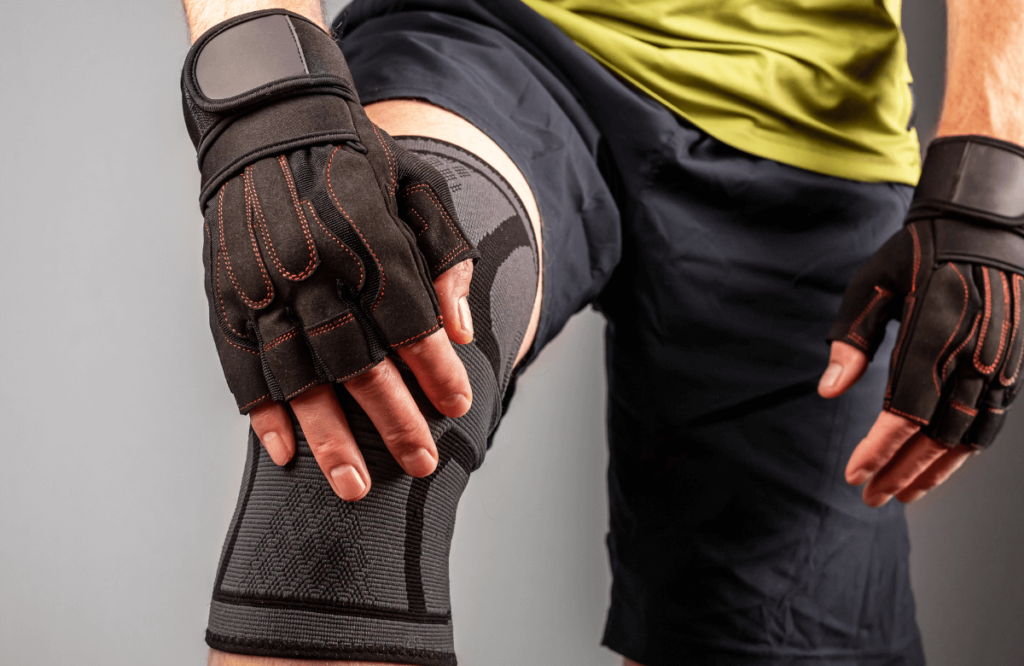
Compression Level
The compression level of knee sleeves holds significant importance due to its impact on support, stability, and overall effectiveness. Optimal compression provides knee joint protection and shields the surrounding muscles, promoting stability and reducing excessive movement during physical activities. It also enhances blood circulation, facilitating the delivery of oxygen to the muscles and tissues, which aids in reducing swelling, and inflammation, and promoting faster recovery.
The compression generated by knee sleeves also generates heat, keeping the knee joint warm and flexible, which can alleviate stiffness and improve joint mobility. Moreover, the right level of compression can help prevent injuries by stabilizing the knee joint and reducing the risk of strains, sprains, and other traumatic injuries.
Additionally, it affects joint stability, balance, and coordination, and provides overall performance enhancement. When selecting quality knee sleeves, it is crucial to consider the appropriate compression level based on your specific needs and comfort level, ensuring optimal support and effectiveness.
Different sleeve constructions come with different levels of compression. Extra compression knee sleeves provide an even higher level of pressure, leading to increased support, pain relief, and improved proprioception. However, it’s crucial to find the right balance of compression, as an excessive level of pressure can have negative effects.
Thickness
When selecting knee sleeves, the thickness of the sleeve plays a crucial role. The thickness refers to the amount of padding or material used in the construction of the sleeve. There are three different thickness options, all designed for different usage areas. The most common neoprene thicknesses range from 3mm to 7mm.
Thicker sleeves offer more support and compression to the knee joint, making them suitable for individuals with weak or injured knees. On the other hand, thinner sleeves tend to be more lightweight and flexible, allowing for greater freedom of movement. Thicker sleeves, while offering more support, might be slightly bulkier and may limit some range of motion.
The thickness of the knee sleeve can also depend on the type of activity you engage in. If you’re involved in high-impact or heavy-lifting activities, thicker sleeves may be more suitable for added support and protection. For lower-impact activities or everyday use, thinner sleeves might be sufficient. Moreover, thinner sleeves can be layered under other equipment, such as knee braces or larger knee sleeves, to provide an extra layer of cushioning, compression, or warmth.
The ideal thickness of a knee sleeve depends on individual needs, comfort preferences, and the specific activities involved. Consulting with a healthcare professional can provide personalized recommendations based on your unique circumstances.
Purpose and Intended Use
The purpose of using the sleeves will help you determine the specific features you should be looking for in your ideal knee sleeves. Whether you need them for injury prevention, post-injury rehabilitation, or performance enhancement in a particular sport or activity, understanding your purpose allows you to choose sleeves that are designed to meet those needs.
In addition, the intended use helps you select the appropriate level of support, compression, and stability required for your specific situation. This ensures that the knee sleeves effectively serve their purpose, whether it’s providing targeted support during intense workouts, aiding in recovery, or offering added stability during everyday activities.
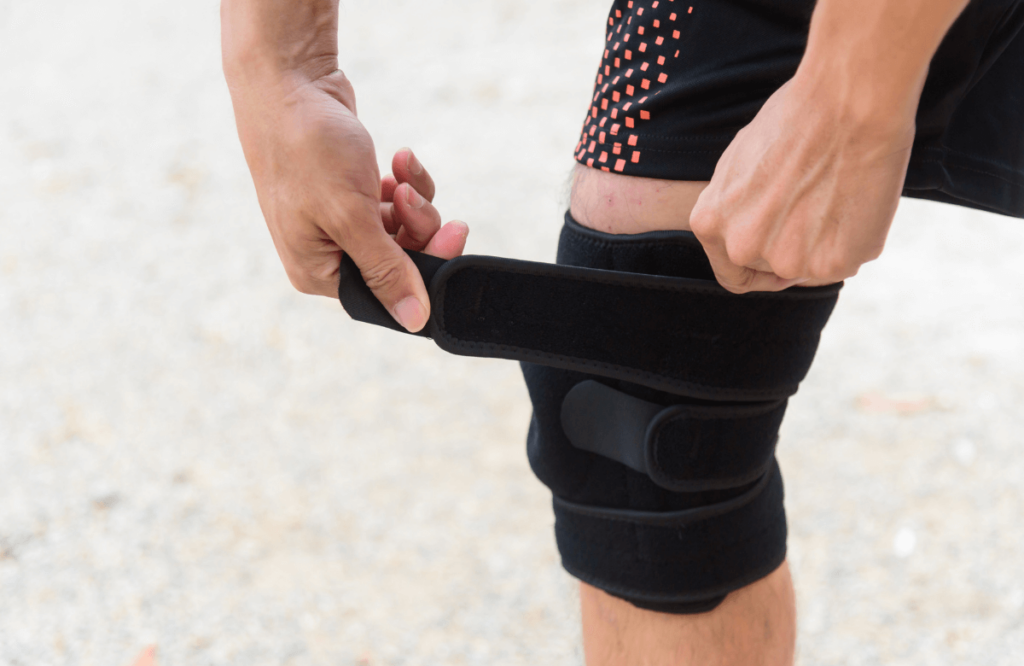
Design Features
Considering design features is essential when choosing knee sleeves because they directly impact functionality, comfort, durability, and aesthetics. Features such as adjustable closures, reinforced stabilizers, and contoured shapes enhance the functionality of knee sleeves by providing a customized fit, targeted support, and improved stability.
Design elements like seamless sleeve construction, soft linings, and moisture-wicking materials contribute to overall comfort by reducing friction, and irritation, and maintaining a dry and comfortable environment. Additionally, design features related to durability, such as reinforced stitching style and durable materials, ensure that the knee sleeves can withstand regular use and maintain their performance over time.
With that said, the placement of stitching affects the durability of the product. Lastly, considering aesthetic elements will help you choose quality knee sleeves that align with your personal style and preferences.
Consider Your Budget
Considering your budget before buying knee sleeves is important for several reasons. First, it helps you determine how much you can afford to spend on this specific piece of equipment, ensuring that you stay within your financial limits. When looking for knee sleeves, focus on products that are affordable and come in pairs in order to avoid overspending.
Additionally, budget considerations allow you to assess the value for money, striking a balance between price and quality. While it’s important to find types of knee sleeves that fit your budget, it’s also crucial to consider the durability, performance, and features they offer. Investing in higher-end knee sleeves within your budget can ensure long-term satisfaction and potentially save you money by reducing the need for frequent replacements.
More expensive sleeves often come with more enhanced materials, targeted compression and support, advanced design and ergonomics, technology integration, and the credibility of reputable brands. They offer a range of benefits for individuals seeking optimal performance, support, comfort, and durability. We don’t recommend buying a product for less than $15 as cheaper knee sleeves may not provide the same quality.
Consult with a Professional
Consulting with a professional is not a bad idea before buying knee sleeves, especially if you have existing knee issues. Seeking advice from a healthcare provider or sports therapist allows for an accurate diagnosis of your condition and personalized recommendations. They can help you find the most suitable type, style, and features of knee sleeves based on your specific needs, activity level, and desired outcomes.
Moreover, professionals can ensure proper fit and sizing, helping you choose the right knee sleeves that provide optimal compression and a light level of support without being too tight or restrictive. By doing so, you can receive a comprehensive treatment plan that may include exercises, physical therapy, or other modalities in conjunction with the use of knee sleeves. This approach helps prevent further injury, ensures the proper management of your knee issues, and promotes better overall knee health.
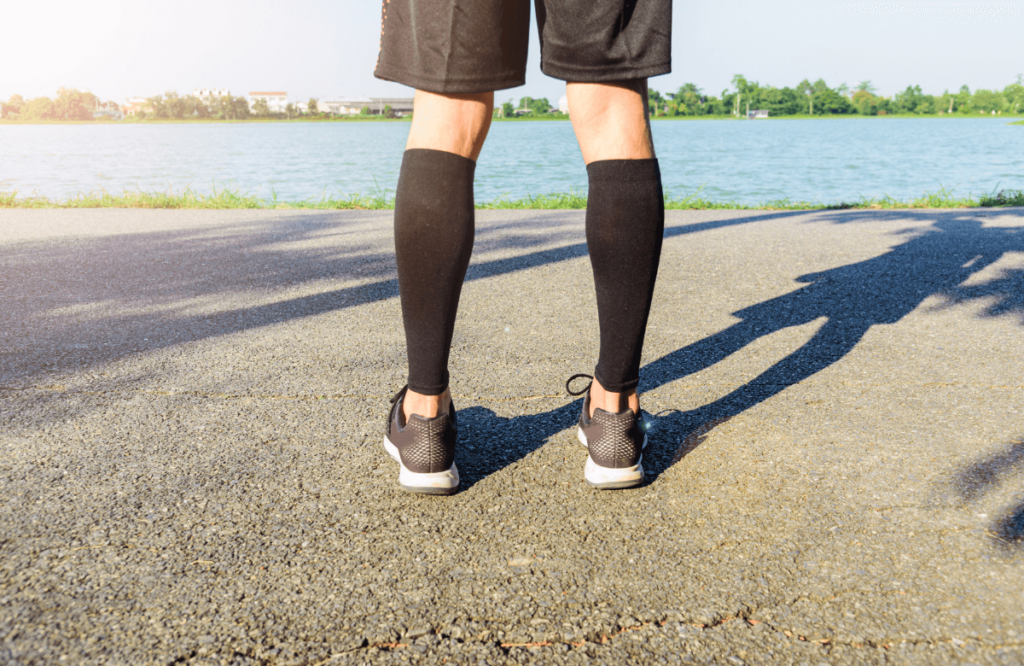
Frequently Asked Questions
How Do Knee Sleeves, Knee Braces, and Knee Wraps Differ from Each Other?
The terms “knee sleeve” “knee brace” and “knee wrap” are often used interchangeably, but they do have distinct differences in terms of their design, function, and level of support they provide.
A knee sleeve is typically made of neoprene or similar materials and is worn over the knee joint. It provides compression, joint warmth, and mild support for general use and pain relief. It is flexible and lightweight, without rigid components or straps. Neoprene is a type of material made of synthetic rubber ideal for thermal insulation and elasticity.
On the other hand, a knee brace is a more structured and rigid device designed to provide specific support, stability, and protection to the knee joint. A knee brace can be made of a combination of materials such as neoprene, metal or plastic hinges, straps, and closures. They are commonly used for more severe knee injuries or ligament instability.
Knee wraps are made of elastic material or cloth bands wrapped around the knee joint. They provide compression, support, and stability to specific areas like the patella or tendons. Knee wraps also help manage conditions like patellar tracking issues, meniscus tear, runner’s knee, or tendonitis, with adjustable compression for individual needs.
How Do You Take Care of Knee Sleeves?
To properly care for knee sleeves, it’s important to follow a few guidelines. You need to check the knee sleeve manufacturer’s instructions for specific care recommendations, but generally, they can be hand-washed or machine-washed on a gentle cycle using mild detergent.
Avoid using bleach or harsh chemicals. Air dry the sleeves instead of using a dryer, and store them in a clean, dry place. Keep your knees clean and dry before wearing the sleeves to maintain hygiene. By following these steps, you can help prolong the life of your knee sleeves and ensure their effectiveness in providing support and compression.
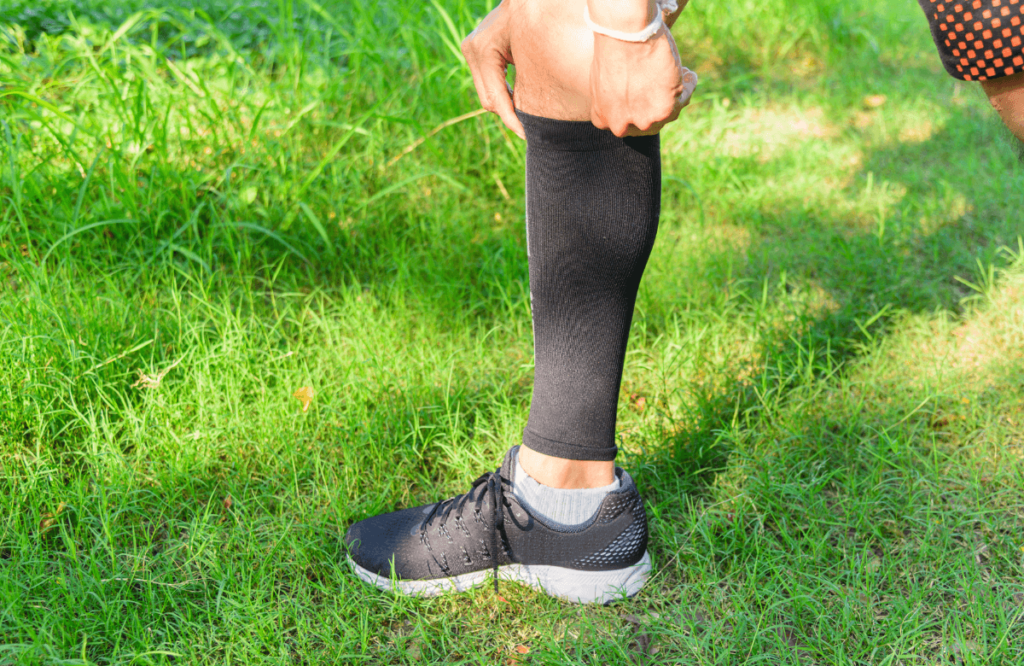
How Long Should I Wear a Knee Sleeve?
How long you should wear a knee sleeve will depend on the purpose, activity level, and guidance from healthcare professionals. For physical activities, it’s generally recommended to wear the knee sleeve throughout the activity to provide support and stability. In post-injury or recovery situations, follow the advice of healthcare professionals or physical therapists regarding when and how long to wear the sleeve.
When using a knee sleeve for pain relief or managing chronic conditions, you should base your decision for wearing the knee sleeve on your comfort and preferences. Some may wear it for shorter periods during aggravating activities, while others may choose to wear it throughout the day for continuous support. Remember to allow breaks to let the skin breathe and prevent moisture buildup.
Can the Use of Knee Sleeves Lead to Weakened Knees Over Time?
Properly designed knee sleeves do not weaken muscles. In fact, they can stimulate the surrounding muscles, contributing to joint support. It’s important to understand that wearing them correctly is crucial to avoid any potential negative effects.
When used properly, knee sleeves can provide protection, stability, and injury prevention for the knees. By wearing them appropriately, you can effectively support your knees and maintain stability, helping to prevent potential injuries.
Do Knee Sleeves Need to Be Tight?
Knee sleeves should fit snugly, providing a comfortable level of compression and support without being excessively tight. They should allow for a comfortable range of motion, ensuring that they don’t restrict movement or cause discomfort during activities. It’s important to find the right balance between a snug fit and proper blood circulation.You should be able to wear comfortable sleeves for extended periods without causing pain, chafing, or skin irritation.
Opt for products made of breathable materials to prevent excessive sweating and discomfort. Referring to the manufacturer’s sizing chart and consulting with a healthcare professional can help ensure the proper fit and maximize the benefits knee sleeves provide.



